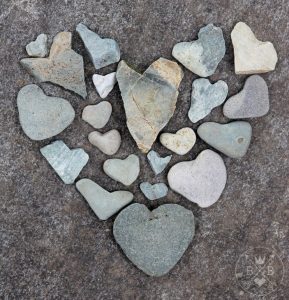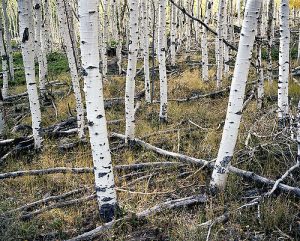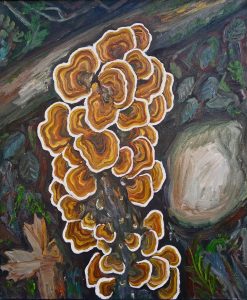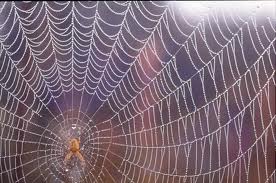 The Columbia City Yoga on-line Moving into Meditation class met this morning. We practiced sitting with the truth of our experience. We contemplated what it is to expand our view in space and time. We can practice hope by keeping our hearts open. We can offer ourselves compassion when they close. We are, each of us, part of the fabric of being. Each thread makes the whole.
The Columbia City Yoga on-line Moving into Meditation class met this morning. We practiced sitting with the truth of our experience. We contemplated what it is to expand our view in space and time. We can practice hope by keeping our hearts open. We can offer ourselves compassion when they close. We are, each of us, part of the fabric of being. Each thread makes the whole.
We heard from Jane Hirshfield’s Emergence Magazine interview, On Time, Mystery, and Kinship.
We heard from Jane Goodall’s Book of Hope: A Survival Guide for Trying Times,
 We heard J. Drew Lanham’s word of hope: To Walk in a Mad World. You can learn more about poet, professor and writer J. Drew Lantham by listening to his On Being interview with Krista Tippett: Pathfinding Through the Improbable. Check out his memoir The Home Place: Memoirs of a Colored Man’s Love Affair with Nature at the library.
We heard J. Drew Lanham’s word of hope: To Walk in a Mad World. You can learn more about poet, professor and writer J. Drew Lantham by listening to his On Being interview with Krista Tippett: Pathfinding Through the Improbable. Check out his memoir The Home Place: Memoirs of a Colored Man’s Love Affair with Nature at the library.
Once again we drew insights from Thich Nhat Hanh’s book, Zen and the Art of Saving the Planet. This beautiful book will help readers to bring compassion and mindfulness to their response to the many environmental and social crises we are witnessing today.
Welcome. Last week we talked about the winds of change that create stress in our lives. We contemplated the teachings on equanimity as a way of restoring balance. We can cultivate qualities of resilience to change what we can and to accept the truth of our experience. This week I want to return to the practice of cultivating the qualities of caring, presence, flexibility and diligence. I think they can help us to see the bigger picture, to “see with understanding.”
This week I struggled to find this view and understanding. I’ve been learning about what it is to accept the truth of experience. I realize that to see with understanding means opening my heart when it wants to close – again and again and again. In order see with understanding I have to seek understanding – the seeking is becoming a journey through time – to include the conditioning of the past, what’s arising in the present moment and the environmental and social concerns of future humans and more than humans. I aim to offer my caring presence and action with this understanding.
In Emergence Magazine’s interview, On Time, Mystery, and Kinship poet Jane Hirshfield spoke of herself in the stream of time:
 I am a thread in an endless fabric. I am not a cut-off isolated phenomenon. And I just feel better when that sense of the full fabric of existence, going backwards in time and forwards in time and outward in every direction, accompanies this small boat that I am rowing through this world.
I am a thread in an endless fabric. I am not a cut-off isolated phenomenon. And I just feel better when that sense of the full fabric of existence, going backwards in time and forwards in time and outward in every direction, accompanies this small boat that I am rowing through this world.
We are all rowing our small boats through this troubled world. In our seeking and our struggling, life and death continue. One of my dearest friend is sitting bedside with her dying friend. Knowing this cuts through the noise. The work of birthing and dying will continue as long as we do. Our loving presence is what keeps hope alive. It is the fabric. We are the thread!
I turned to Jane Goodall for wisdom. In her Book of Hope: A Survival Guide for Trying Times, she shared many stories from her long life of devoted service. She also shared these words of wisdom and encouragement:
Only if we understand, will we care. Only if we care, will we help. Only if we help, shall all be saved. . . .
 Each one of us matters, has a role to play, and makes a difference. Each one of us must take responsibility for our own lives, and above all, show respect and love for living things around us, especially each other. . . .
Each one of us matters, has a role to play, and makes a difference. Each one of us must take responsibility for our own lives, and above all, show respect and love for living things around us, especially each other. . . .
Every day we make some impact on the planet. And the cumulative effect of millions of small ethical actions will truly make a difference. . . .
Change happens by listening and then starting a dialogue with the people who are doing something you don’t believe is right. . . .
We still have a long way to go. But we are moving in the right direction. If only we can overcome cruelty, to human and animal, with love and compassion we shall stand at the threshold of a new era in human moral and spiritual evolution—and realize, at last, our most unique quality: humanity. . . .
 Many of us have been experiencing near hopelessness. Most of us are grieving some form of loss. We have witnessed suffering here in our country and throughout the world. And yet just bringing ourselves here today is an act of hope. As Vaclav Havel says hope is a state of mind, an orientation of the spirit, an orientation of the heart. It isn’t a fragile hope that some day things will be better and then we will be happy.
Many of us have been experiencing near hopelessness. Most of us are grieving some form of loss. We have witnessed suffering here in our country and throughout the world. And yet just bringing ourselves here today is an act of hope. As Vaclav Havel says hope is a state of mind, an orientation of the spirit, an orientation of the heart. It isn’t a fragile hope that some day things will be better and then we will be happy.
Poet, teacher and writer J. Drew Lanham speaks to this hope:
To walk in a mad world,
but not be mad.
To not imagine how it happened,
but know the all too painful why.
To mourn hope’s demise,
but revive it from deep within.
To weaken at the knees,
but stand strong in my belief.
To feel broken,
but somehow begin the repair.
To have justice denied
but know it must come out of my own making
To be empty,
but not full of hate.
To know despair,
but make short the relationship.
To have worth demeaned
but know my worth’s meaning.
To have no words,
but find something worthy to say.
To have confusion be the choice,
but see my own way clear.
To be bitter,
but find sweetness in kindred hugs.
To have the game cheated away
but my life’s practice soundly played.
To wallow in all this misery,
but wash clean in worthy mission after.
To be lost
but keep the bearing home in heart’s map.
To have the heaviness weigh two tons
but find lightness knowing I’m not alone.
To lose trust in so-called friends and neighbors,
but find faith in those more mindfully close.
To want better in some tomorrow to come,
someday
beyond this day
whenever that time might come,
These are my pleas, my promises to self, my solemn prayer;
To whatever God or gods might be listening this dark morning.
Let’s begin our meditation. Let’s start with what is true for us right now.
 I invite you to let the many words and ideas land where they will. Adjust your position as you need to be at ease. You might do a brief stretching movement and take a few deeper breaths. As you settle into stillness let the breath resume its natural way. Notice the inhales and the exhales.
I invite you to let the many words and ideas land where they will. Adjust your position as you need to be at ease. You might do a brief stretching movement and take a few deeper breaths. As you settle into stillness let the breath resume its natural way. Notice the inhales and the exhales.
As you’re ready, begin to move awareness through your body. Notice any tension and relax whatever you can over the brow, jaw and mouth. Your neck and upper back. Feel around your shoulders, down your arms and through your hands. Release whatever you can. Feel around your chest and belly. Your spine and pelvic bowl. Feel around your hips, down your legs and into your feet. Sense your whole body as it breathes. Sense your being. Here, now.
As you’re ready you might notice thoughts and emotions that are present. There may be a sense of hurting, fear or anger. There may be emptiness or numbness. There may be whispers of judgment. Can you breathe with what surfaces? Can you offer time and space to truly feel? Is it possible to feel these feelings and also the larger spaciousness of loving awareness?
Sense what being here truly feels like. You might notice where feelings emerge from. Perhaps the source is a deeper love and concern. A vital caring or compassion. You might offer yourself kindness. You could lightly rest your hands over your heart. As you breathe in, imagine the breath is softening the area around your heart or any other area in need of soothing. You might repeat silently to yourself, “It’s OK.” As you breathe out, take your time and imagine letting go of any tension around the heart and repeat, “This is enough,” It’s O.K. It’s enough. Can your inner voice be patient, soothing and loving? Repeat this for a few slow breaths and stop when you feel ready. Relax your arms and hands.
 Relax however you can. Breathe and sense yourself in the river of time. From the mountains of history through the ground of your being and finally to the oceans of future generations. Each moment bringing aliveness that is moving and changing.
Relax however you can. Breathe and sense yourself in the river of time. From the mountains of history through the ground of your being and finally to the oceans of future generations. Each moment bringing aliveness that is moving and changing.
See if you can attune to the essential goodness, the worthiness of your being – the sense that you matter. Sense your being here, your body touching Earth’s body. If you like you might imagine opening your heart to others who share this worthiness. Thich Nhat Hanh reminds us that:
. . . .when we shed the light of compassionate attention on our actions, an interesting shift can happen – this . . . becomes a seed of compassion for all the other people just like us who are caught in fixed mind, closed mind, hard heart. We let this recognition connect us with others.
Notice how these words land in your heart. Is it possible to keep the heart space of compassionate attention open? When the heart closes can you breathe and feel? Can you offer self-kindness until it can open again? We realize compassion when we can recognize that this suffering is not ours alone. Sense the dear friends and the hearts they bring to practice today. We may
 . . . be lost
. . . be lost
[and we can ] keep the bearing home in heart’s map.
[We may] have the heaviness weigh two tons
but find lightness knowing [we are] not alone.
[We may have lost] trust in so-called friends and neighbors,
but find faith in those more mindfully close.
To want better in some tomorrow to come,
someday
beyond this day
whenever that time might come . . .

